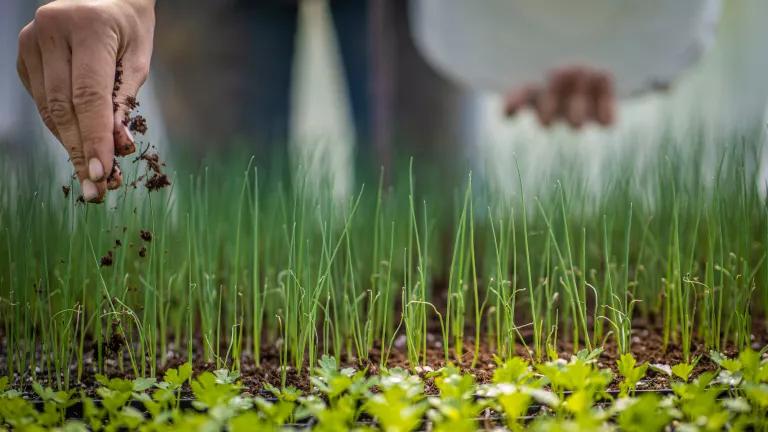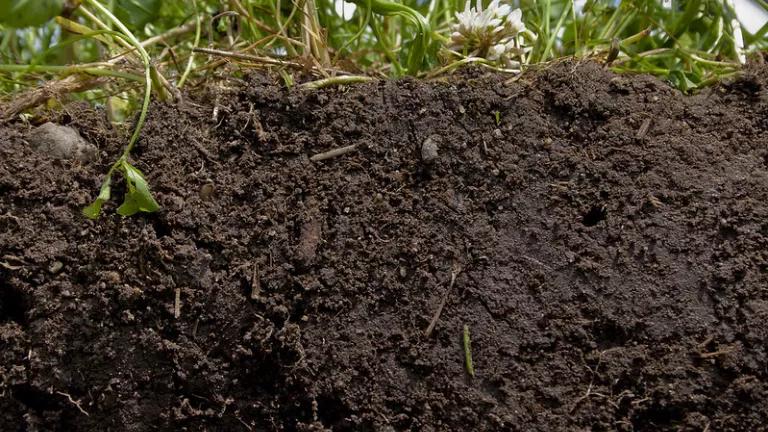Agroforestry’s Critical Role in Climate-Smart Farming
This National Arbor Day, we examine how combining agriculture and forestry through the practice of "agroforestry" can help redefine the climate-smart future of farming.

Slash Pine Silvopasture in Washington County, Florida
Climate change continues to threaten food systems at home and abroad, highlighting the urgent need for innovative environmental and economic solutions. As the nation comes together to celebrate the 150th anniversary of National Arbor Day, it’s time to consider how integrating trees into the production of food and livestock can help combat the climate crisis. By encouraging the widespread adoption of agroforestry, a farming practice that combines agriculture and forestry, the U.S. can grow a more sustainable future.
Agroforestry 101
Agroforestry is a form of regenerative agriculture rooted in traditional Indigenous land management. It encourages diverse and integrated farming systems, compared to modern industrial agriculture which favors farmers who produce a single crop at large scale. The five most common practices of agroforestry include:
- Riparian forest buffers: Cultivating trees, shrubs, or perennial plants along the edges of streams, lakes, or wetlands;
- Silvopasture: Incorporating trees into livestock pastures;
- Alley cropping: Alternating rows of crops with rows of trees or woody plants;
- Forest farming: Cultivating forest crops (e.g., mushrooms, ferns, ginseng, goldenseal) under managed tree canopies; and
- Windbreaks: Planting rows of trees or shrubs to protect crops from the wind and improve soil and water quality.
NRDC recently interviewed more than 100 regenerative farmers, who expressed significant interest in agroforestry and the holistic practices that improve soil health, help manage and control erosion, and capture broad ecological and climate benefits.
Agroforestry’s Advantages
Agroforestry offers a myriad of benefits. Most notably, trees in agroforestry systems convert carbon dioxide from the atmosphere and store it in their roots and leaves. Because agroforestry relies on trees that live for many years, as opposed to annual commercial crops whose rapid death and decomposition add to the industry’s outsized emissions footprint, agroforestry sequesters significantly more carbon than traditional—and even certain regenerative—agricultural practices. According to one study, agroforestry has the potential to offset up to a third of the U.S.'s carbon emissions each year.
Agroforestry is also a powerful tool to increase crop productivity and support economic growth. By modifying local environmental conditions (e.g., temperature, nutrient availability, soil and water quality), agroforestry has the ability to improve crop yields. Windbreaks preserve moisture and shield crops from temperature fluctuations and wind, and alley cropping can increase cropland profitability compared to traditional row crops. Moreover, farmers can diversify their crops and grow their revenue through integrated agroforestry systems. Expanding agroforestry practices also presents an opportunity to create new jobs, especially in rural communities. A recent analysis by the World Resources Institute found that the federal government could support over 49,500 jobs by annually investing $1.8 billion in agroforestry.
In addition to its impressive carbon storage potential and economic benefits, agroforestry offers numerous ecological and environmental advantages. Agroforestry improves water quality and prevents soil, organic carbon, and nutrient losses. Riparian forest buffers, for example, filter runoff from farms and can help reduce toxic harmful algal blooms. These buffers also improve habitat for fish and wildlife by providing shade and decreasing water temperatures. One program in Washington that encourages farmers to plant native vegetation alongside streams—instead of crops—saw summer water temperatures drop more than 10 degrees Fahrenheit, while local spring-run Chinook salmon populations rebounded impressively.

Riparian Forest Buffer in Queen Anne's County, Maryland
Photo: courtesy of Chesapeake Bay Program via Flickr
Creating the Path for More Agroforestry
Fortunately, the U.S. Department of Agriculture (USDA) recognizes both the opportunity and need for forward-thinking agricultural solutions like agroforestry. Last year, the agency announced the development of a Climate-Smart Agriculture and Forestry (CSAF) strategy, emphasizing voluntary initiatives that offer farmers and ranchers technical and financial assistance to boost their productivity and mitigate climate change impacts.
There is tremendous opportunity within CSAF to expand agroforestry technical support, research, and funding—all investments necessary to overcome significant barriers to agroforestry adoption. In the coming months, attention should shift to the numerous ways that climate-smart practices can be translated into policies in the Farm Bill, which will direct our nation’s agricultural spending for half a decade. Both the U.S. Forest Service and the Natural Resources Conservation Service have the authority to promote holistic agroforestry practices. Given the increasing and severe impacts of climate change, there has never been a better time to invest in sustainable agricultural solutions.
Next Steps for Agroforestry
As Congress begins writing the 2023 Farm Bill, the nation should adopt integrated policies in agroforestry to prepare agricultural communities for the difficult challenges of climate change. Establishing programs to support farmers and ranchers who seek to incorporate these time-honored traditions into their farm and ranch operations will make the land more productive, resilient, and able to withstand climate impacts.




